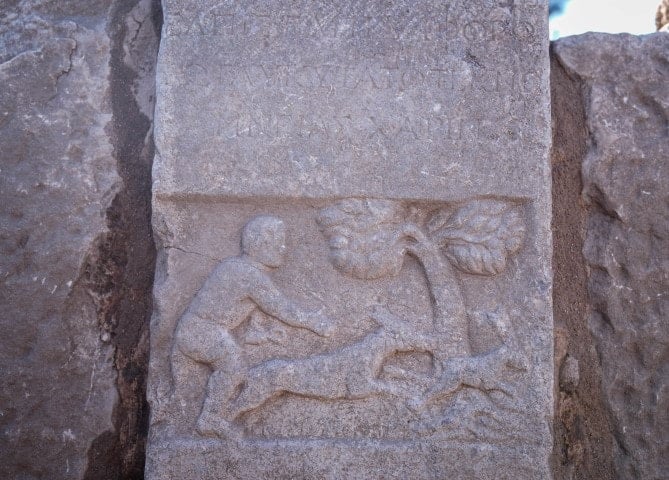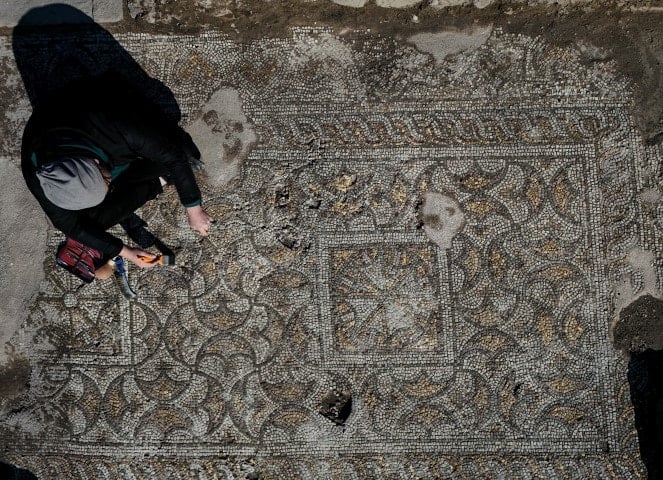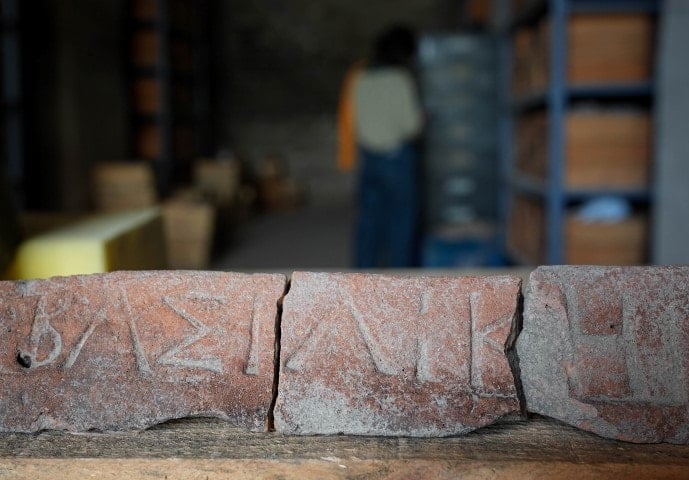'Mosaic House' comes to light: Royal seal found

Excavation and restoration work at the Bergama Multi-Layered Cultural Landscape Area in Izmir, which is on the UNESCO World Heritage List, was carried out uninterruptedly throughout the year within the scope of the "Heritage for the Future Project" of the Ministry of Culture and Tourism.
Manisa Celal Bayar University Archaeology Department Head Prof. Dr. Yusuf Sezgin, the project's coordinator and excavation manager, said that the excavations within the scope of the project started last September.
Sezgin stated that extensive studies were being carried out with great investments in archaeological excavations in Turkey with the Heritage to the Future project, and that this was a new era for Turkish archaeology.
Prof. Dr. Sezgin explained that they carried out work at several points in the Ancient City of Pergamon and stated that a large building complex called the "Mosaic House" was found in the excavations near the Red Courtyard.
Drawing attention to the fact that such structures were used by important people in ancient times, Sezgin said, "The Mosaic House, called the 'peristyle house' in ancient times, forms a large residential complex with its central stone courtyard and pool."

Sezgin stated that one of the important features of the complex structure is the mosaic spaces and noted the following:
"One of the most striking features of the Mosaic House is that it has mosaic floors. This shows that it was an important structure. We assess that the structure was built in the 2nd and 3rd centuries AD. It must have continued to be used during the Christian period, because the Red Courtyard, known as the Temple of the Egyptian Gods, located right behind it, was converted into a church, indicating that a Christian community lived in the region.
We think that it was abandoned in a great fire during the Arab raids in the 7th century. Roof tiles and burnt vessels show that this destruction was the result of a fire. Mosaics were found in four different places in the structure. In these mosaics, which date back to the 3rd and 4th centuries, the use of geometric and plant motifs and different colors is striking."

Reminding that Bergama was a royal capital in the Hellenistic period, Sezgin reported that a sealed roof tile piece, determined to have been used in royal buildings, was found in the Mosaic House excavation.
Yusuf Sezgin, stating that the Hellenistic tile piece was also used in the Roman-era structure, said, "We found a tile piece with the word 'Basilique' written on it. Basilique in Hellenic means belonging to the king. It is known that such seals were used in structures specially built for the royal family in the Pergamon Acropolis. If there was this expression on a building, it meant it belonged to the king. We had found similar examples in pieces before, but this is the first time a complete sealed tile has been unearthed."

Sezgin said that they noticed that tombstones were used in the pool in the courtyard of the Mosaic House.
Prof. Dr. Sezgin, who stated that a sad story was depicted on the stone that they thought was removed from the grave and used in the pool, said, "There is a phrase written on the tombstone that says 'the sweetest child in the world'. A child figure is depicted hunting rabbits with his dog by his side. This stone, which is understood to have been made by his mother, contains both emotional aspects and clues about the social life of the period."
Sezgin stated that they assessed that the complex structure, of which 20 percent has been unearthed so far, remained empty for a long time after it was demolished, and that they identified a cemetery from the Byzantine period in the region.
Yusuf Sezgin noted that these were the graves of the last Byzantines of Pergamon before the Turks arrived, and that they encountered more than one burial in some graves, which showed that living conditions were not very good at that time.
Sezgin noted that many works used in daily life, such as kitchenware, war tools, jewelry and coins from the Roman and Byzantine periods, were unearthed during the excavations, and emphasized that suitable ones of these will be exhibited in the Bergama Museum.
Sezgin added that restoration work was carried out at the Temple of Dionysus as part of the project, as well as lighting projects at the Asklepion and Acropolis for night museums.
SÖZCÜ






